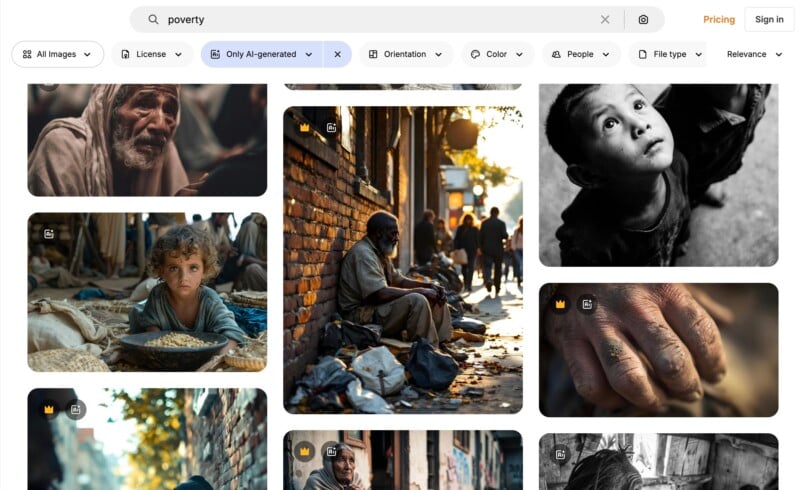Aid Agencies Are Using AI Images Instead of Real Photos

AI-generated images are rapidly replacing traditional photography in portraying extreme poverty, while stock photo websites are increasingly flooded with visuals created using Midjourney, Stable Diffusion, and other image generators.
In an article for The Lancet, researcher Arsenii Alenichev calls the phenomenon “poverty porn 2.0.”
“It is quite clear that various organizations are starting to consider synthetic images instead of real photography, because it’s cheap and you don’t need to bother with consent and everything,” says Alenichev.
A search for “poverty” on Adobe Stock and Freepik — two popular stock photo websites — turns up scores of AI-generated images

CEO of Freepik Joaquín Abela tells the Guardian that consumers are driving demand for AI images, claiming it is not the platform’s responsibility.
“It’s like trying to dry the ocean. We make an effort, but in reality, if customers worldwide want images a certain way, there is absolutely nothing that anyone can do,” Abela says.
Even big players like the United Nations have turned to AI: a video depicting “re-enactments” of sexual violence in conflict was taken down after the Guardian contacted them. However, a video (below) from Plan International remains online that features AI imagery.
Ethical Representation
For years, the debate around “poverty porn” and photography has raged, with arguments being made that subjects are reduced to mere props; think of the staged photograph by Edwin Ong Wee Kee.
“It saddens me that the fight for more ethical representation of people experiencing poverty now extends to the unreal,” Kate Kardol, an NGO communications consultant, tells the Guardian.
Alenichev, who works at the Institute of Tropical Medicine in Antwerp, Belgium, says that the AI images “replicate the visual grammar of poverty” and he’s collected hundreds of AI images used by aid agencies that are not only unreal but also perpetuate stereotypes.
Adobe Stock, which didn’t comment on the Guardian’s story, earlier this year denied reports that the website’s portfolio was nearly 50 percent AI-generated images. Photographer Robert Kneschke’s research found that 300 million AI images were uploaded in just three years — it took 20 years for photographers to upload that many real photos to Adobe Stock. While Adobe disputes those numbers, what is clear is just how easy it is to make AI images that look like real photos.